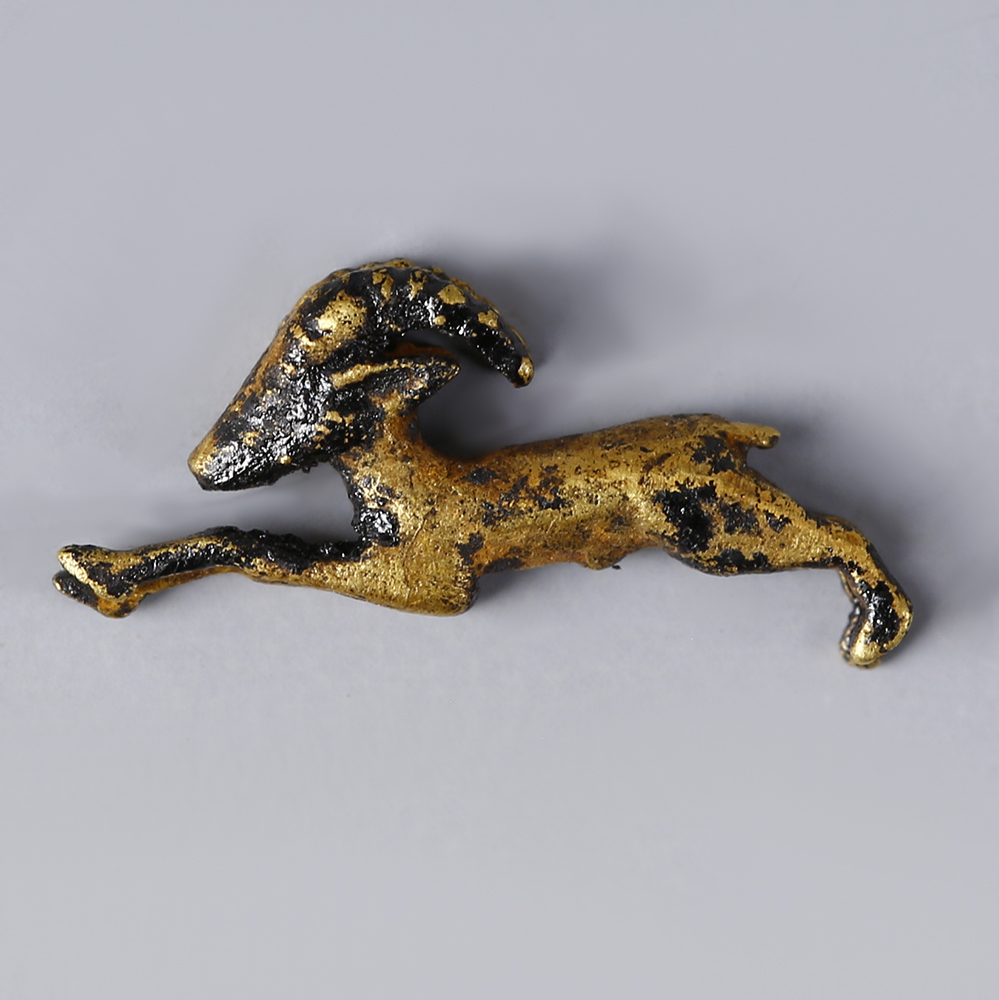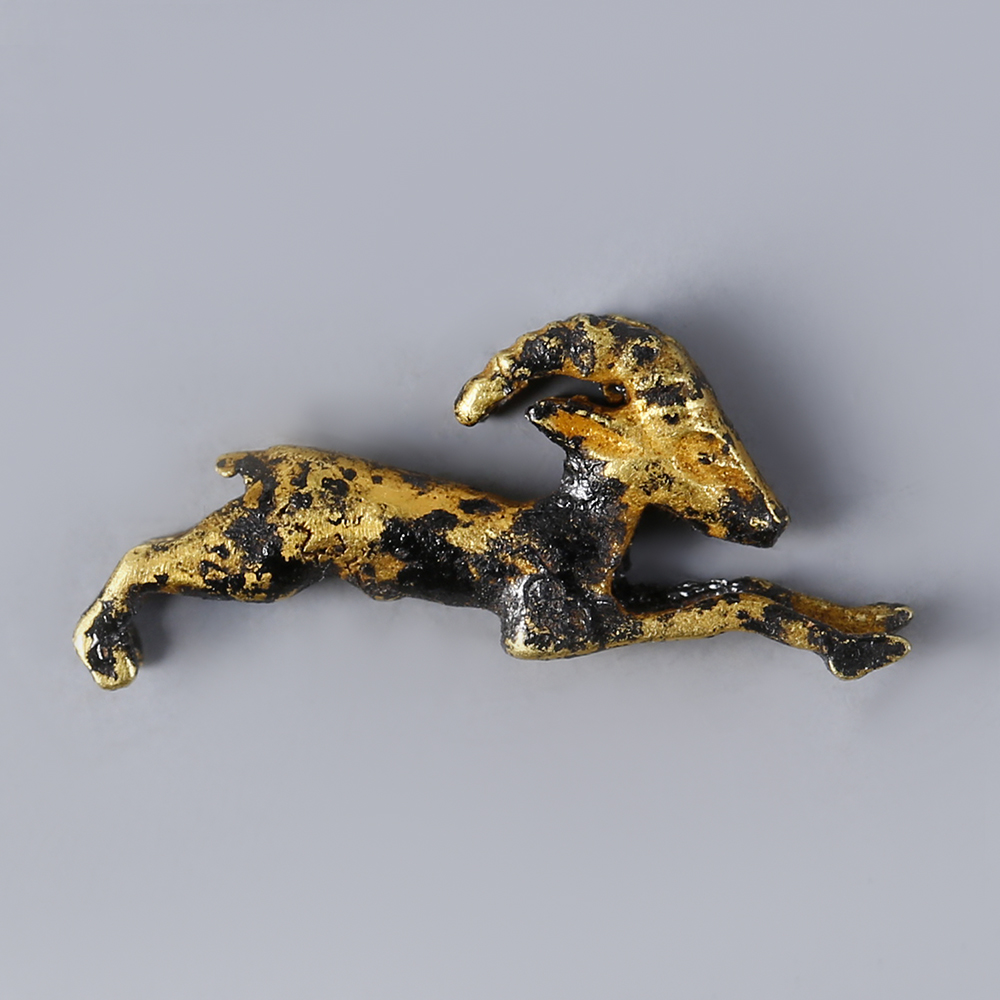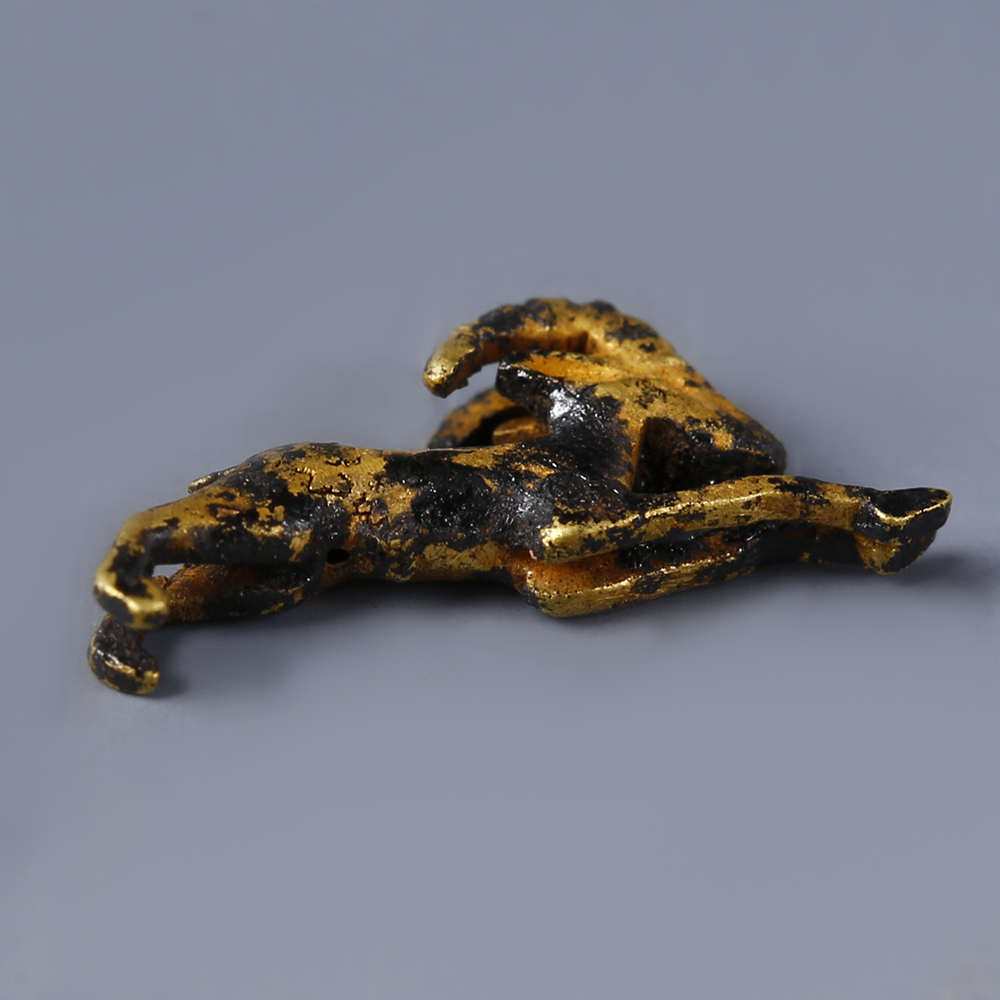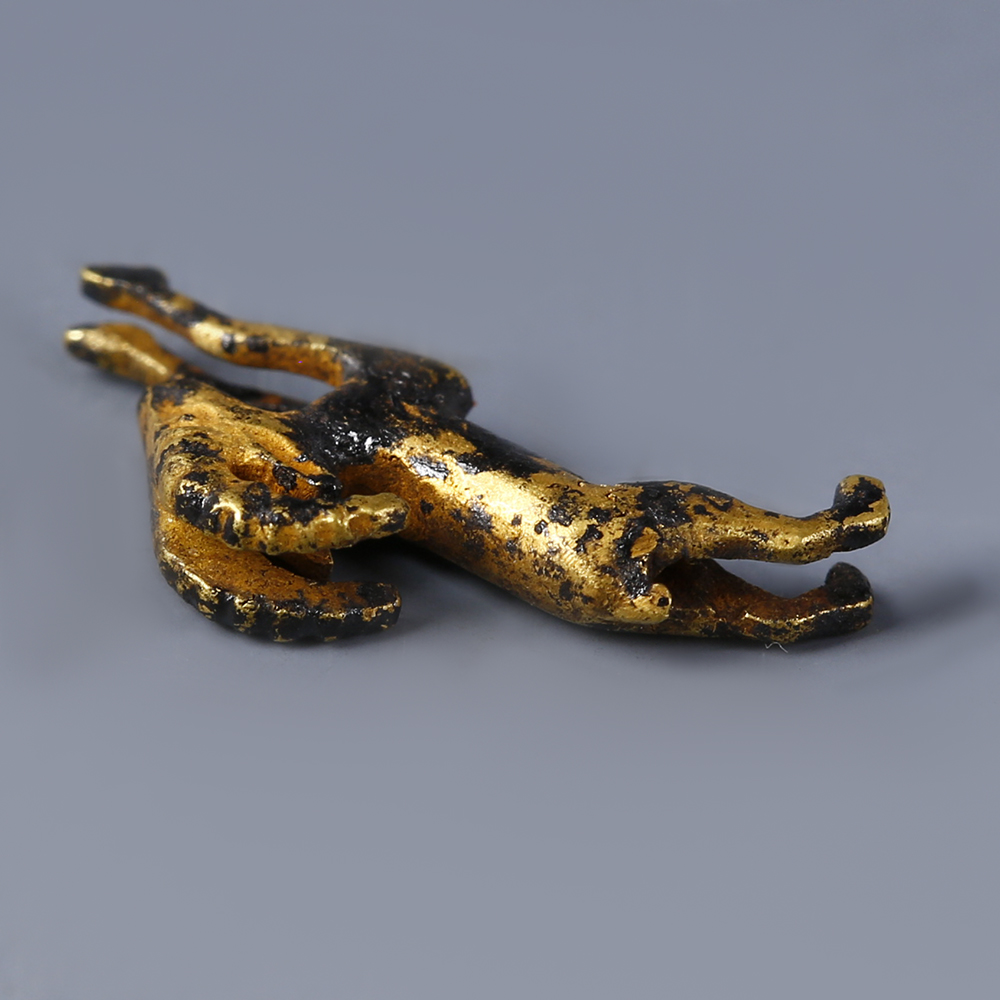Gazelles, antelopes and ibexes were often depicted within Egyptian art. They were a symbol of ‘the hunt’, a prey animal depicted in offering lists. In particular, the ibex was often displayed in 3-dimensional form, for example as a cosmetic palette or as a pouring jar. It was also used most often on scarabs, in comparison to other gazelle types, as the Nubian ibex was small in size and landed itself well to minute depictions. This amulet exemplifies the small stature of the ibex particularly well. Ibex amulets have been found dating to the pre-dynastic Badarian Period, circa 4500 BC, and it seems they were associated with varying properties. From the Old Kingdom the animal was associated with the god Seth. Perhaps an amulet was meant to ward of the malevolent powers of the evil god. As mentioned, the ibex was often offered as an offering, in food lists. Perhaps amulets such as these were meant for use in the afterlife, as a food source. Most importantly however, the ibex was also considered regenerative and thus would have been associated with the afterlife. Its ability to survive in the desert was seen as a way of overcoming the land of death, and by extension, death itself.
Egyptian Gold Ibex Amulet
$684.17
An extremely fine Egyptian amulet modelled from gold in the shape of an ibex portrayed in a mid-stride position. The amulet features large horns that curve to the back of the head, characteristic of the Nubian ibex. The forelegs and hind legs are stretched out in the act of running or leaping. The ibex is pierced horizontally through the body for suspension.
Period: The Late Period
Condition: Fine condition, some earthly and bitumen deposits.
SOLD
| Weight | 0.88 g |
|---|---|
| Dimensions | L 1.3 cm |
| Culture | |
| Region | |
| Metal |



